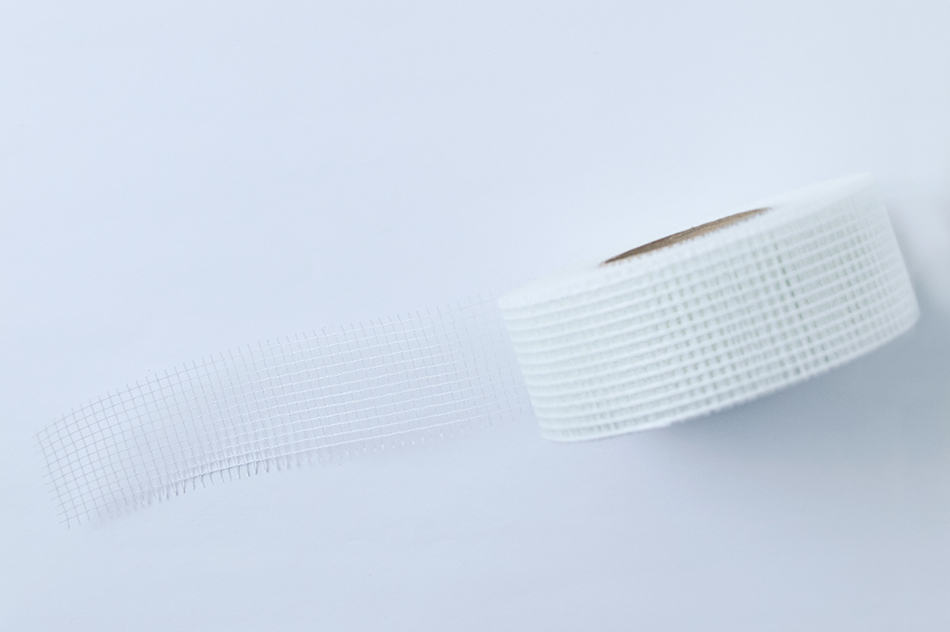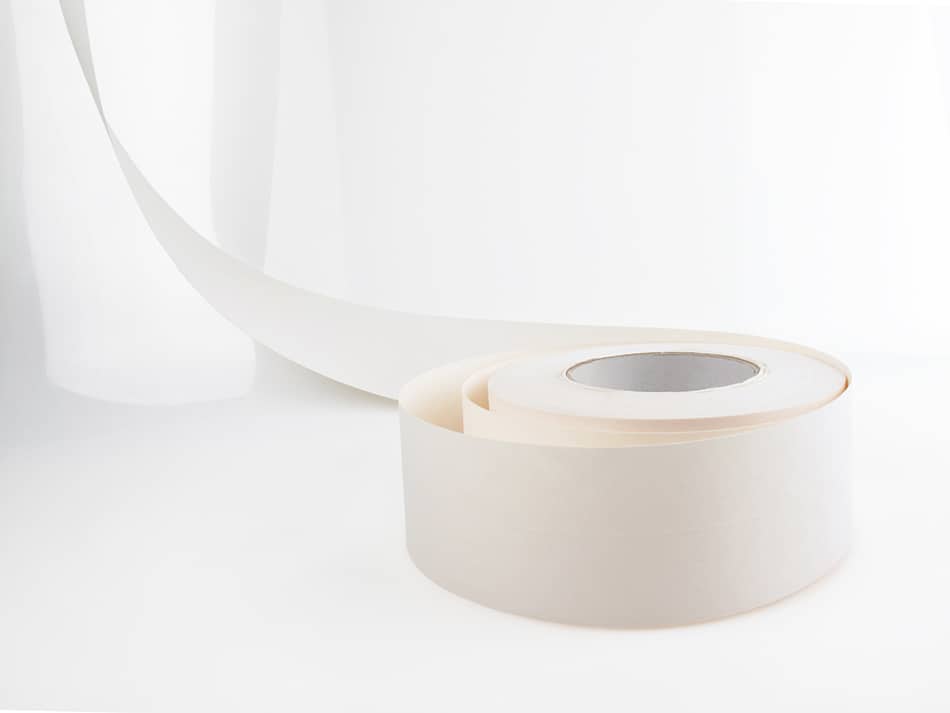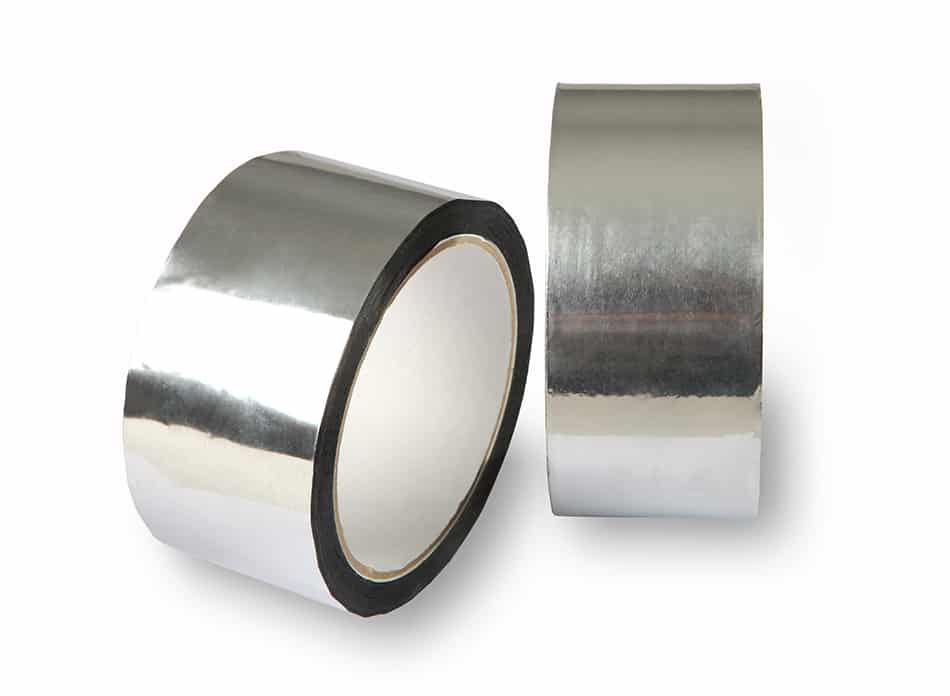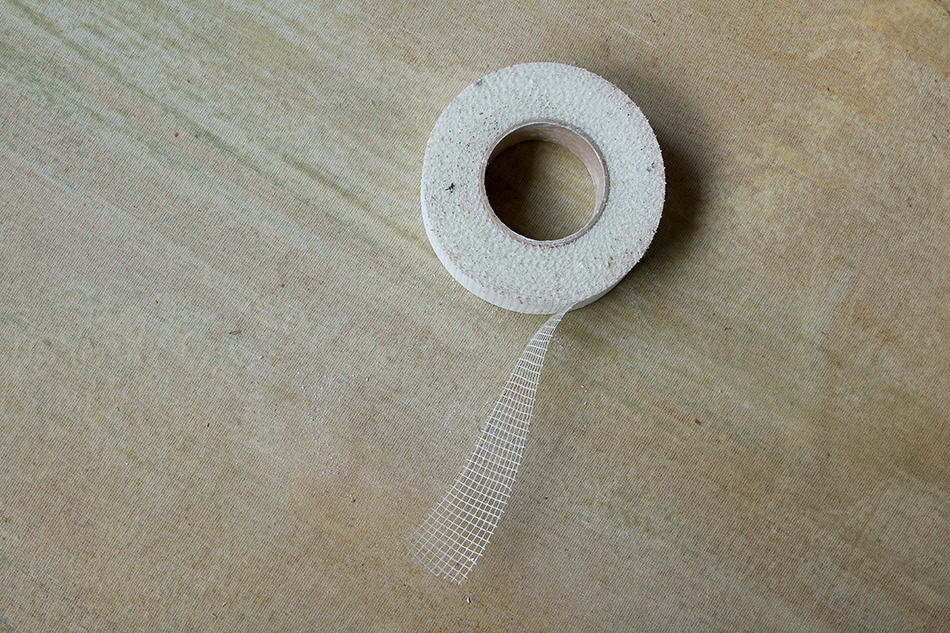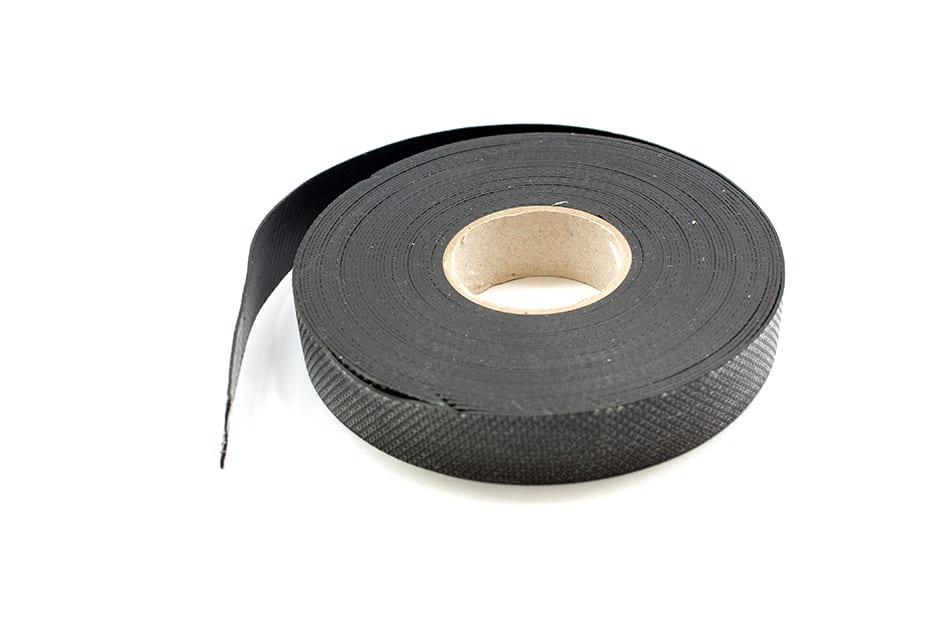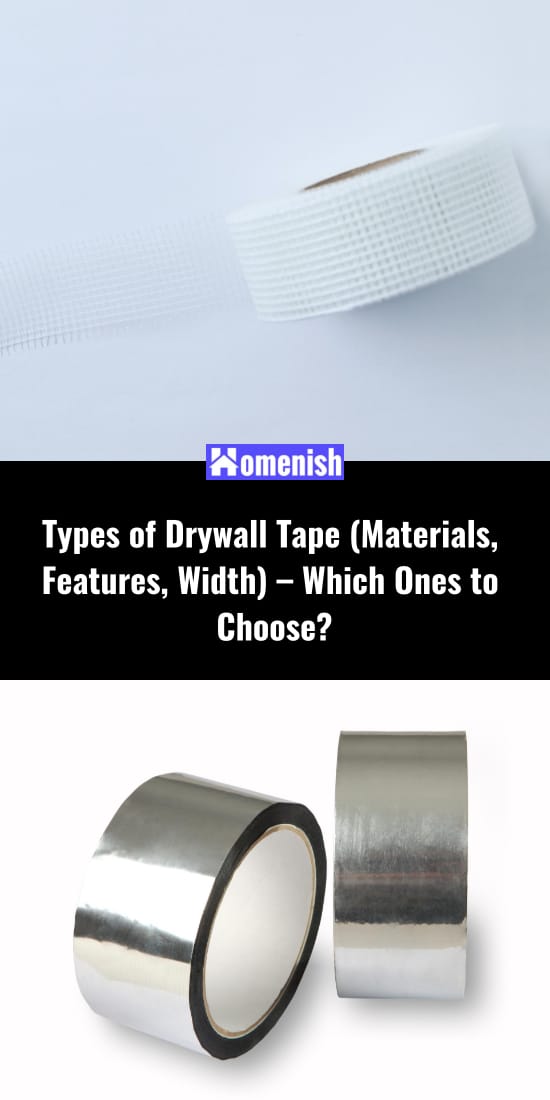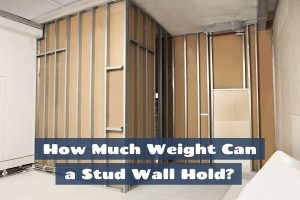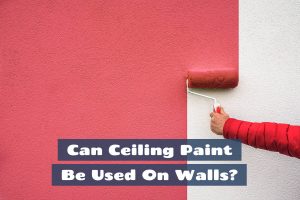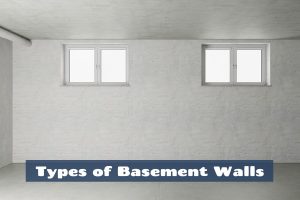Whether you’re putting up new drywall or patching hole, you need drywall tape. The question is which kind to buy. It comes in different materials, with optional features, and in various sizes. In this guide, we’ll explain what each type of drywall tape is for so that you’ll have an easier time smoothing drywall with longer lasting results.
Let’s start with the lowest quality but most affordable varieties and work our way up.
Drywall Tape Materials
1. Paper Drywall Tape
It’s cheap and easy to use. If you’re going to be buying a lot of drywall tape as a contractor, this is probably what you want, though it’s not the easiest to use.
You start by adding some joint compound to the sides of the gap, then moistening the paper briefly in water so that it sticks to the compound. It’s nice because you can smooth it out very easily without having any bubbles trapped underneath. Of course, it’s also easy to tear, so you might need to practice with it for a while.
It makes a smooth seal as long as you can apply it straight over the gap and don’t need to overlap pieces of the tape. Also, don’t press the tape too forcefully into the compound as that will make the mixture squeeze out, leaving you with not enough material for the paper to adhere to. In this case, when the paper dries, it will peel right off the wall. If you don’t have your plaster up and dried yet, you’ll just need to redo the papering and start over.
2. Metal Tape
Metal tape isn’t fully metal like HVAC tape is. It’s a type of paper tape with metal lining the edges to reinforce it. It’s difficult to get a smooth finish with metal tape, but it might be good in areas where the wall is going to be textured with stucco or some type of aggregate. Unfortunately, the addition of the metal makes it more expensive. It may or may not be self-stick. If it is self-stick, the adhesive isn’t generally as good as the fiberglass tape below.
When you use metal tape, be careful in how you unroll and apply it. You need to make sure the metal edges don’t crinkle and that they go on flat against the wall to prevent bumps.
3. Fiberglass Mesh Tape
This type of tape is thicker than paper drywall tape and has its own advantages and disadvantages. For one, you don’t have to wet it, and you don’t need to apply joint compound before placing it. Rather, it has self-stick backing that will adhere directly to your drywall.
The issue is that you need to cut this tape rather than tearing it like you would paper tape. It can also stick to itself, and if you’ve ever been working with duct tape that sticks to itself, you’ll understand how frustrating this can be. It means cutting a whole new length of tape. Also, because this is thicker, you’ll need to be a little more careful in the amount of plaster you use to create an evenly finished surface.
If you’re working near a door or window, where the wall is likely to move a little or be under any degree of tension, this is a better tape to use than paper. The material and thickness of the tape makes it stronger.
Because the corners don’t stick as well as the length of tape, be sure to cover fiberglass mesh tape quickly. Also, because it’s thicker, you need to make sure to smooth it out along the length of the gap to prevent air bubbles.
4. Thin Fiberglass Tape
This has the same self-stick quality as fiberglass mesh tape, but it’s smoother and thinner, meaning you can get an even finish without as much effort. It’s not as strong, though, and comes at a higher price. It will still stick to itself if you’re not careful and tears more easily because it’s so much thinner.
Drywall Tape Features
Besides the material you prefer your drywall tape to be made of, you can also shop for specific features. Think about where you’re going to be using the tape and weigh the benefits of each feature compared to the additional cost. Some features make the tape easier to work with, while others provide additional security to your home or building.
Let’s start with features that make application easier, then move into those that help mitigate safety concerns.
5. Rolled vs. Strips
Just as with painter’s and masking tape, drywall tape generally begins in rolls, making it simple to hang on to and to deal with while you are taping up the drywall. Most types of tape are flexible enough that being on a roll does not make it more difficult to apply to a straight, flat surface. The exception to this is metal tape. You may want to buy this in flat strips rather than rolls to avoid bends in the wire.
6. Self-Adhesive
If you’re dealing with anything other than paper drywall tape, it probably comes with self-stick backing. This allows you to avoid messing in water to apply the tape. It’s a less messy process, but be careful not to let the tape stick to itself when you pull it off the roll, or you’ll just end up wasting a lot of time and tape.
7. Flexible
This is a quality of different brands of tape. Some are thicker or use a stiffer material. It’ll be up to your preference which variety feels best to you. Stiffer and thicker material may be stronger, but it may or may not be easier to smooth down depending on how it comes off the roll. Again, metal tape is notorious for wanting to keep its rolled shape and bending when you try to straighten it.
8. Perforated
Instead of using scissors to cut the tape to length, you can buy tape with perforations. The only downside is that the tape isn’t strong leading into the perforation. This type of tape is also more expensive because it takes involves another step in the process to make it.
9. Fireproof
While this type of drywall tape tends to be a little bit more pricey than other choices, it’s excellent when utilized in spaces where fires are prone to break out. Think about using this near your furnace and around any heating ducts. This should also be the choice around ovens. If you’re setting up drywall in an industrial or institutional building, think about any equipment being used nearby or the type of utilities passing through the wall.
The cost of this tape makes it prohibitive for using throughout the building, so only use it where it can reasonably mitigate the danger of fire. In contrast, it doesn’t work well in areas with high humidity. Your wall may stand just fine with a little moisture, but the tape inside can still absorb and deteriorate from damp conditions.
10. Moisture-Resistant
On the other side is moisture-resistant tape. It’s rare for a drywall tape to be both fireproof and moisture-resistant, so you’ll most likely use these in different rooms.
Over time, your drywall tape should dry and seal totally to the wall; however, if there is wetness in the air, it can make the tape peel off of the wall either by shrinking the paper or loosening the adhesive. The only method to fix this issue is to totally get rid of the tape and change it with moisture-resistant tape that can stand up to damp conditions. In addition, tape that reacts negatively to moisture is much more likely to have issues with mold.
11. Mold-Resistant
All mold-resistant drywall tapes are moisture-resistant, but not all moisture-resistant tapes are mold-resistant. Being moisture-resistant simply means the adhesive won’t weaken, and the material won’t break down in damp conditions. It can still be wet on the surface with no ill-effects to the material itself. It can still grow mold.
When a drywall tape is listed as mold-resistant specifically, it means there are added chemicals in the tape that prohibit mold-growth. Mold is something you definitely do not want growing in your walls as it can so quickly spread, so if you’re putting up or patching drywall in an area susceptible to humidity, go ahead and buy tape that isn’t just moisture-resistant but mold-resistant too. The added cost is worth it.
Drywall Tape Width
Size also matters when selecting your drywall tape. In general, it’s best to use just as much type as you need for small areas and only one piece for larger areas. You don’t want to use many thin strips of tape for a large area as you’ll only create more seams to cover.
12. Narrow — 1-7/8″
This smallest size of drywall tape is best for individuals who have experience hanging drywall or have very narrow gaps to fill in. It requires butting the drywall pretty close together and hanging the tape straight to fully cover the gap. If you have a wider gap than this will cover with enough space to stick onto on both sides, buy a broader tape. You don’t want to have to overlap two pieces of tape. Doing so just makes it more difficult to get a smooth finish.
13. Medium– 2 -2 1/ 2″
Somewhat larger than the narrowest drywall tape, that bit of additional space makes utilizing this drywall tape a lot easier for almost everyone. Rather than fretting about if you are placing the tape at an angle and will have to cut it to begin over, buying larger tape means you can usually one strip for the entire height of the wall much more easily.
14. Wide– 6″
Jumping up quite a bit in width is this large-sized variety. It will cost more than twice as much, but it’s worth it if you have to cover a big hole. This shouldn’t be the case if your building new, but if you’re just wanting to do a quick patch job, placing a 6-inch bit of tape across the area, then covering it over can be just the thing you need. Keep in mind that any large gaps in drywall that are just covered with plaster will be weaker than the adjoining area.
15. Extra Wide — 36″
If you have a larger portion of your wall to fix and don’t want to use more than one strip of drywall tape, so you do not have to stress about how to layer it efficiently over the problem area, then you can purchase drywall tape that is extremely large. This very broad drywall tape is likewise helpful for producing an ornamental appearance on the wall, such as a textured wall. It’s a little challenging to locate drywall tape that is this broad, though, and when you do, it’s crucial to keep in mind that it might come in one or two types only.
Do be careful when using this wide of tape to cover an area. If you don’t reinforce it, any pressure on the plaster covering the tape can cause the tape to bend in and come loose, causing your hole to reappear. In most cases in which you’d need this large of drywall tape, it’s best to cut a square and insert a new piece of drywall. Then, tape the gaps around the new and old drywall with narrower tape and continue to cover the entire section over as normal. This will ensure a more structurally sound will and longer lasting repair.
Conclusion: Which Type of Drywall Tape to Buy?
As you can see, each type of drywall tape has its advantages and disadvantages when it comes to price, application, safety, or producing a final result. Which drywall tape you use will depend on the size of area you need to cover, your skill in covering drywall, the conditions in the area you’re working in, and which price point makes the most economical sense to you.
